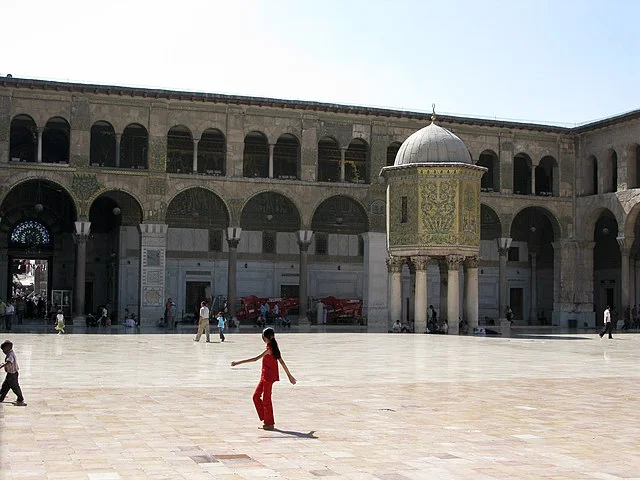The Umayyad Mosque, also known as the Great Mosque of Damascus, stands as one of the most important and enduring monuments in Islamic history. Located in Damascus, Syria, it was constructed under the Umayyad caliphate’s rule, beginning in AD 705. This monumental structure marked a new era of Islamic architecture and was one of the first mosques to reflect the artistic vision of an emerging empire. Scholars consider it a symbol of Islamic conquest and religious consolidation in the region.
Get your dose of History via Email
The mosque’s location holds great significance. Before the mosque’s construction, a Roman temple dedicated to Jupiter occupied the site. Later, it became a Christian basilica dedicated to John the Baptist, a revered prophet in both Christianity and Islam. When the Umayyad caliph al-Walid I ordered the mosque’s construction, he integrated elements from the basilica, including John the Baptist’s shrine. This connection to multiple faiths adds to the mosque’s symbolic importance.
Architectural Features
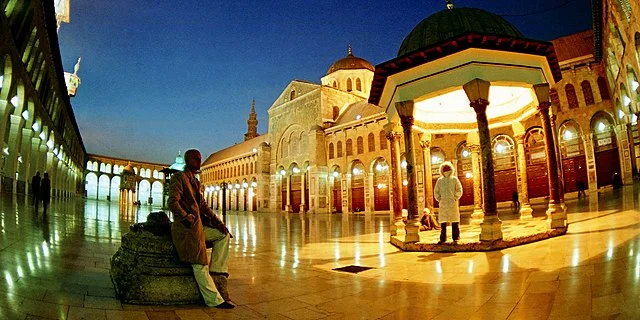
The Umayyad Mosque showcases a blend of Greco-Roman, Byzantine, and Islamic architectural styles. Builders adapted and incorporated elements from the earlier Roman temple and Christian basilica. They constructed the mosque with materials from ancient structures, a common practice that added both durability and historical continuity.
The mosque’s structure is vast, with a rectangular floor plan covering an area of 97 by 156 meters. Its layout includes a large central courtyard surrounded by arcades and a prayer hall with three naves. This design influenced Islamic architectural practices and set a standard for mosque construction in the centuries that followed.
One of the mosque’s defining features is its intricate mosaics, depicting landscapes, rivers, and trees. Though damaged over time, these mosaics reveal the influence of Byzantine art and are thought to symbolize the Quranic description of paradise. Historians suggest that Byzantine craftsmen may have contributed to their creation, emphasizing the cultural exchange between the Umayyads and the Byzantine Empire.
Religious and Cultural Importance
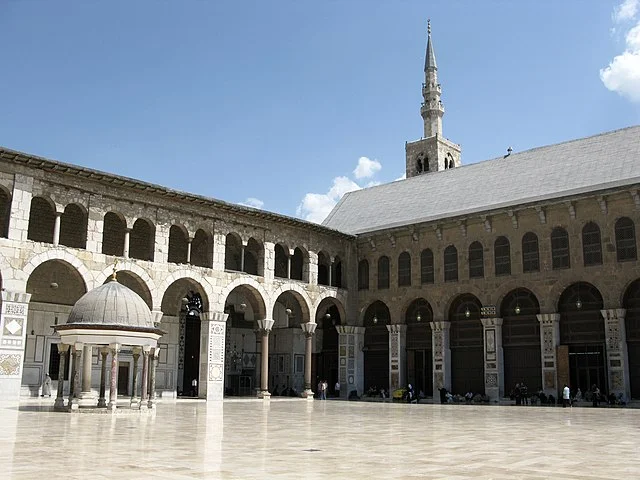
The Umayyad Mosque serves as a place of worship and a significant cultural symbol. Muslims regard it as one of the four holiest sites in Islam. The mosque houses the shrine of John the Baptist, attracting both Muslim and Christian pilgrims. This shared reverence for a holy figure highlights the mosque’s role in fostering interfaith connections.
Additionally, the mosque is associated with eschatological beliefs within Islam. Many believe that it will be a prominent site during the end times, as Islamic traditions state that Jesus (Isa in Islam) will descend to this mosque. This belief contributes to the mosque’s spiritual and cultural influence across the Muslim world.
Historical Modifications and Conservation Efforts
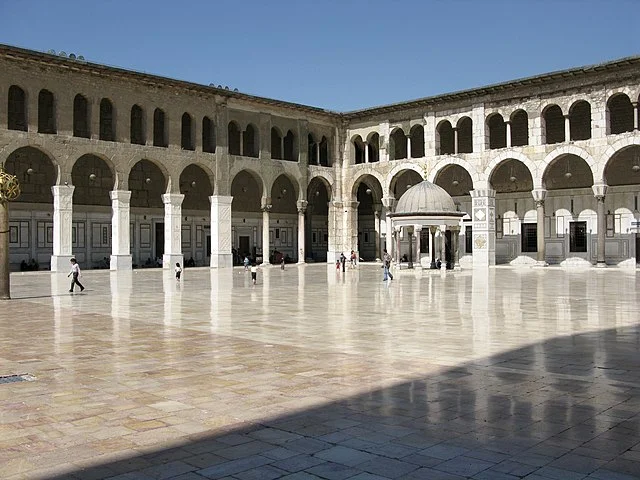
Throughout history, the Umayyad Mosque underwent various modifications and repairs due to fires, invasions, and natural disasters. In AD 1401, Timur’s Mongol army looted Damascus, damaging parts of the mosque. During the Ottoman period, officials conducted extensive restorations to preserve the mosque’s structure and aesthetics. In modern times, Syria’s government and international organizations have worked to maintain its architectural integrity.
However, the mosque has faced challenges from the ongoing Syrian civil war. In AD 2013, armed conflict damaged parts of the structure, including sections of the prayer hall and minaret. Despite this, restoration efforts continue, highlighting the mosque’s resilience and the dedication to preserving its historical value.
The Umayyad Mosque’s Legacy
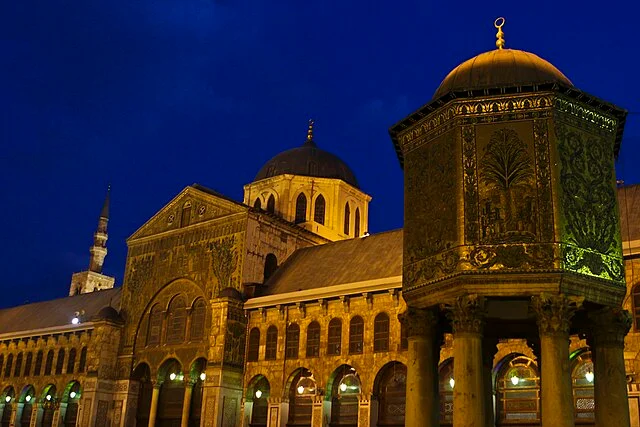
The Umayyad Mosque remains a testament to Islamic art, architecture, and cultural heritage. Its combination of architectural styles and its religious significance make it a unique symbol of Islamic history. Moreover, the mosque has influenced mosque designs in regions as far as Spain and North Africa, especially the Great Mosque of Cordoba.
Through centuries of conflict and restoration, the Umayyad Mosque endures as a powerful reminder of Damascus’s historical and cultural importance in the Islamic world. Its legacy reflects the Umayyad caliphate’s ambition, the city’s rich history, and the mosque’s role as a spiritual and architectural landmark.
Source:

